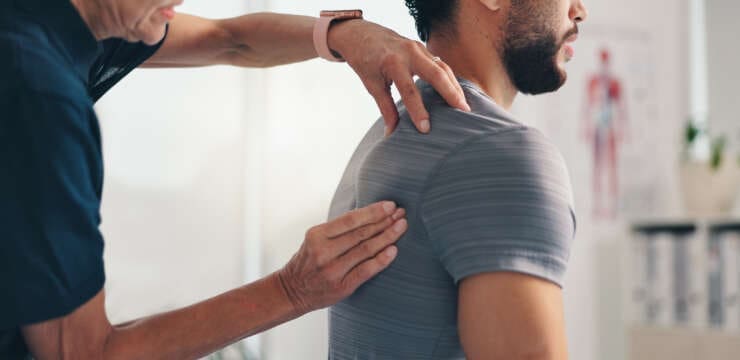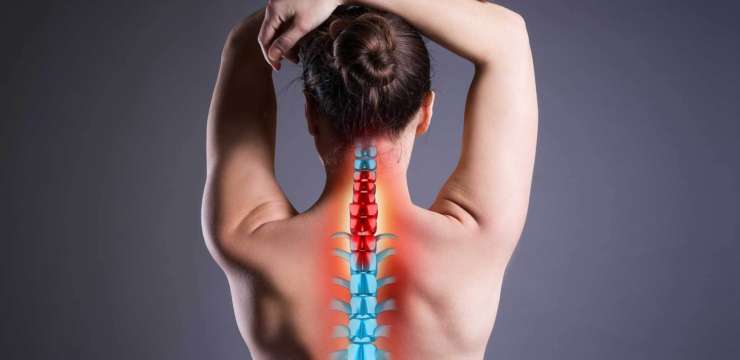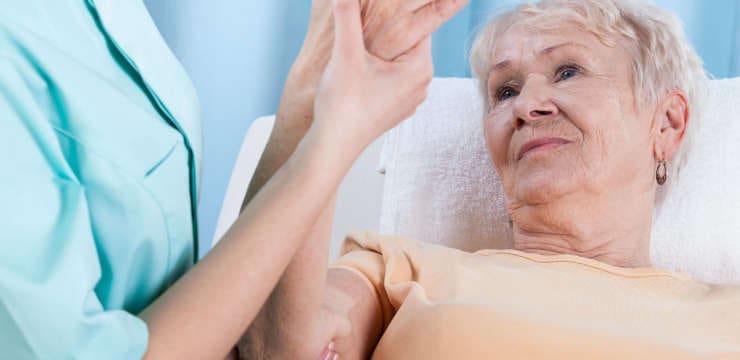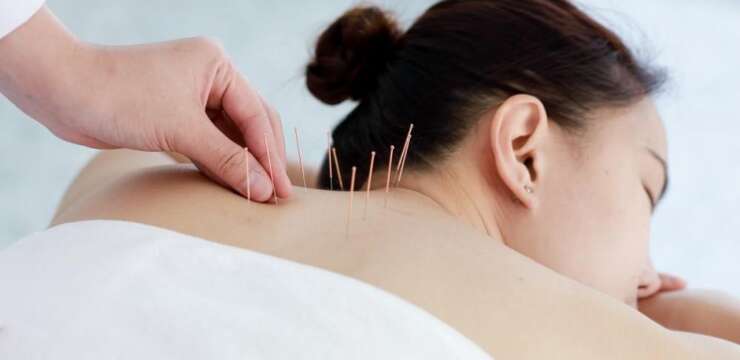
Table of Contents
Teachers, Sciatica, and Chiropractic — A Health-Coaching Playbook for Real-World Relief

Why this matters for teachers (and why coaching works)
Teaching is physically and mentally demanding. Long stretches of standing, sitting, and stooping help students add up to a steady load on the lower back and hips. Over time, these stresses can irritate the sciatic nerve, resulting in pain, tingling, or numbness in one leg. Stress and time pressure can tighten muscles further, causing pain to flare more often (Boyne Ergonomics, n.d.; Paragon Chiropractic, n.d.). Health coaching helps because it turns good advice into daily routines—small, repeatable actions that protect your spine during real school days.
Sciatica in plain language
Sciatica is irritation or compression of the sciatic nerve or its roots. Common signs:
-
Sharp, burning, or shooting pain from the lower back or buttocks down one leg
-
Numbness or tingling; sometimes weakness
-
Worse after long sitting or standing; bending and twisting can aggravate it
Drivers include disc bulge, joint irritation, and tight hip muscles (e.g., piriformis). These often pair with posture strain and low core endurance (Scoliosis Center of Utah, 2025; Alliance Orthopedics, n.d.).
The teacher risk profile
-
Prolonged standing while lecturing or monitoring (East Bay Chiropractic, 2023)
-
Prolonged sitting for grading and planning (Bomberg Chiropractic, n.d.)
-
Awkward postures—leaning over desks, twisting to the board (Boyne Ergonomics, n.d.)
-
Carrying loads—laptops, books, supplies
-
Chronic stress, which raises muscle tension and pain sensitivity (Paragon Chiropractic, n.d.)
What chiropractic adds (and why coaching makes it stick)
Chiropractic care can reduce nerve irritation, improve joint motion, and rebalance how your spine carries load. For teachers, a conservative plan often includes:
-
Gentle spinal/pelvic adjustments to restore motion and calm irritation (Active Health Center, 2024; AFCadence, n.d.)
-
Soft-tissue work for glute/piriformis tension (Artisan Chiro Clinic, n.d.)
-
Targeted mobility + strength for hips and core (Alliance Orthopedics, n.d.)
-
Ergonomic coaching for board height, desk setup, and teacher-station flow (Scoliosis Center of Utah, 2025; Boyne Ergonomics, n.d.)
Health-coaching layer: we translate the plan into mini habits you can perform between bells—brief movement snacks, simple desk tweaks, and quick stress resets—so the benefits last (Anchor to Health Chiropractic, 2021; Innervate Chiropractic, 2024; Abundant Life Chiropractic, 2025).
The HealthCoach.clinic 3-pillar framework
Pillar 1 — Align & Calm
Goal: reduce painful load and settle the nerve.
-
Chiropractic adjustments matched to comfort and presentation (Active Health Center, 2024)
-
Breathing reset (60–90 sec): 4-second inhale, 6-second exhale, repeat 8–10 times (Paragon Chiropractic, n.d.)
-
Micro-mobility pair (60 sec): Cat-camel × 8–10; thoracic wall slides × 10
-
Heat/ice as advised; short, pain-tolerant walks
Coaching cue: anchor this to class transitions. When students pack up, you do your reset.
Pillar 2 — Strengthen & Stabilize
Goal: support the spine with hips and core.
-
Glute bridges 2 × 10–12
-
Bird-dog 2 × 6–8/side (slow)
-
Hip hinge practice × 10 (neutral spine)
-
Nerve-friendly hamstring “floss” 1–2 minutes, small range (Active Health Center, 2024; Alliance Orthopedics, n.d.)
Coaching cue: use a “2×2 rule”—two exercises, two sets, most days. Consistency beats intensity.
Pillar 3 — Ergonomics & Stress
Goal: remove daily triggers and lower reactivity.
Classroom setup (5 fast wins):
-
Board zone from shoulder to eye level.
-
Chair: hips slightly above knees; lumbar supported.
-
Monitor: top third near eye level; about an arm’s length.
-
Keyboard/mouse close to your body—elbows by your sides.
-
Wheeled cart or balanced backpack for supplies (Boyne Ergonomics, n.d.; Bomberg Chiropractic, n.d.; Scoliosis Center of Utah, 2025).
Movement snacks (every 30–45 min):
-
10 sit-to-stands
-
10 wall slides
-
30–60 sec brisk hall walk
-
5 hip hinges
Stress-downshifts: one minute of slow breathing between classes (Paragon Chiropractic, n.d.).
A teacher-friendly 10-minute routine (daily)
Stop if pain worsens. Adjust reps/sets to comfort; consult your provider.
-
Cat-camel × 10
-
Hip hinge × 10
-
Glute bridges 2 × 10–12
-
Bird-dog 2 × 6–8/side
-
Standing figure-4 stretch 2 × 20–30s/side
-
Hamstring floss 1–2 minutes
On heavy days, add a 5-minute walk after school (Active Health Center, 2024; Alliance Orthopedics, n.d.).
Six-week coaching roadmap
Weeks 1–2: Calm & Basics
-
Adjustments + soft-tissue as indicated
-
Ergonomic “big 5”
-
Daily 6-move routine (reduced reps if flared)
-
One stress reset every period
Weeks 3–4: Endurance & Flow
-
Progress bridges (single-leg support), bird-dog holds, step-ups
-
Add 1–2 movement snacks per class
-
Fine-tune board/desk heights
Weeks 5–6: Resilience & Prevention
-
Practice lift/hinge with classroom loads
-
Standing tolerance plan: alternate feet; small footrest
-
Weekly tune-up or check-in; refine stress tools (Paragon Chiropractic, n.d.)
When to get extra help
Seek prompt medical evaluation if you notice progressive weakness, foot drop, bowel/bladder changes, fever, unexplained weight loss, or significant trauma. Imaging (e.g., MRI) may be useful when red flags exist or when conservative care isn’t matching your exam findings (Jimenez, n.d.).
How Dr. Alex Jimenez’s dual-scope team supports educators
In El Paso, Dr. Jimenez (DC, APRN, FNP-BC) integrates chiropractic and nurse practitioner assessments to connect symptoms with their causes, coordinates advanced neuromusculoskeletal imaging when indicated, and provides a plan that combines adjustments, exercise therapy, ergonomic coaching, massage, and acupuncture. The clinic also assists with work-injury, personal-injury, and MVA documentation, making reports and timelines clear for teachers who need administrative support (Jimenez, n.d.; Active Health Center, 2024; AFCadence, n.d.; Artisan Chiro Clinic, n.d.).
FAQs (coaching edition)
Can I keep teaching?
Usually yes—with load management, movement breaks, and targeted care (East Bay Chiropractic, 2023).
Do adjustments hurt?
Most are gentle and relieving; techniques are matched to you (Active Health Center, 2024).
Why do flares keep returning?
Often, a daily trigger (such as desk height, board placement, carry habits, or stress) wasn’t addressed. Pair care with ergonomic fixes and micro-breaks (Anchor to Health Chiropractic, 2021; Boyne Ergonomics, n.d.).
Bottom line
For teachers, sciatica relief isn’t just about one visit—it’s about forming repeatable habits: practicing alignment care, engaging in small daily exercises, optimizing classroom setup, and taking brief stress resets. Health coaching helps transform these into routines that fit a school day, so your spine feels better now and stays healthier later.
References
-
Abundant Life Chiropractic Health Center. (2025, August 11). Back-to-school spine health: Understanding sciatica and how to prevent it. abundantlifechiropractor.com/back-to-school-spine-health-sciatica-prevention/
-
Active Health & Wellness Center. (2024, September 9). Sciatica and chiropractic care: Natural solutions for nerve pain. activehealthcenter.com/sciatica-and-chiropractic-care-natural-solutions-for-nerve-pain/
-
AFCadence. (n.d.). Aligning your spine: How chiropractors target sciatica pain. afcadence.com/aligning-your-spine-how-chiropractors-target-sciatica-pain/
-
Alliance Orthopedics. (n.d.). Do I need a chiropractor or physical therapy for sciatica relief? allianceortho.com/do-i-need-a-chiropractor-or-physical-therapy-for-sciatica-relief/
-
Anchor to Health Chiropractic. (2021, August 20). How chiropractic care can help teachers. anchortohealth.com/2021/08/20/how-chiropractic-care-can-help-teachers/
-
Artisan Chiro Clinic. (n.d.). Managing sciatica pain: Chiropractic approaches to consider. www.artisanchiroclinic.com/managing-sciatica-pain-chiropractic-approaches-to-consider/
-
Bomberg Chiropractic. (n.d.). Sedentary job? Here’s how to keep your body healthy while you sit. www.bombergchiropractic.com/Company-Information/Blog/entryid/60/sedentary-job-heres-how-to-keep-your-body-healthy-while-you-sit
-
Boyne Ergonomics. (n.d.). Reducing ergonomic risk among teachers. boyneergonomics.ie/reducing-ergonomic-risk-among-teachers/
-
East Bay Chiropractic (Marmorale, M., DC). (2023, December 28). Benefits of chiropractic care for teachers. eastbaychiropracticoffice.com/blog/benefits-of-chiropractic-care-for-teachers/
-
Innervate Chiropractic. (2024, July 31). The top 10 benefits of chiropractic care for teachers: A detailed guide. www.innervatechiropractic.com/the-top-10-benefits-of-chiropractic-care-for-teachers-a-detailed-guide/
-
Jimenez, A. (n.d.). El Paso, TX chiropractor Dr. Alex Jimenez DC | Personal injury specialist. dralexjimenez.com/
-
Paragon Chiropractic. (n.d.). What lifestyle changes are most effective in preventing sciatica? www.paragonchiropractic.com/What-Lifestyle-Changes-Are-Most-Effective-In-Preventing-Sciatica
-
Scoliosis Center of Utah (Dean, K., DC). (2025, May 13). How posture and sciatica are connected: A comprehensive guide to relief. scoliosiscenterofutah.com/posture-and-sciatica-relief/
Disclaimers
Professional Scope of Practice *
The information herein on "Teacher Lower Back Alignment and Sciatica Help" is not intended to replace a one-on-one relationship with a qualified health care professional or licensed physician and is not medical advice. We encourage you to make healthcare decisions based on your research and partnership with a qualified healthcare professional.
Blog Information & Scope Discussions
Welcome to El Paso's wellness blog, where Dr. Alex Jimenez, DC, FNP-C, a board-certified Family Practice Nurse Practitioner (FNP-C) and Chiropractor (DC), presents insights on how our team is dedicated to holistic healing and personalized care. Our practice aligns with evidence-based treatment protocols inspired by integrative medicine principles, similar to those found on dralexjimenez.com, focusing on restoring health naturally for patients of all ages.
Our areas of chiropractic practice include Wellness & Nutrition, Chronic Pain, Personal Injury, Auto Accident Care, Work Injuries, Back Injury, Low Back Pain, Neck Pain, Migraine Headaches, Sports Injuries, Severe Sciatica, Scoliosis, Complex Herniated Discs, Fibromyalgia, Chronic Pain, Complex Injuries, Stress Management, Functional Medicine Treatments, and in-scope care protocols.
Our information scope is limited to chiropractic, musculoskeletal, physical medicine, wellness, contributing etiological viscerosomatic disturbances within clinical presentations, associated somato-visceral reflex clinical dynamics, subluxation complexes, sensitive health issues, and functional medicine articles, topics, and discussions.
We provide and present clinical collaboration with specialists from various disciplines. Each specialist is governed by their professional scope of practice and their jurisdiction of licensure. We use functional health & wellness protocols to treat and support care for the injuries or disorders of the musculoskeletal system.
Our videos, posts, topics, subjects, and insights cover clinical matters, issues, and topics that relate to and directly or indirectly support our clinical scope of practice.*
Our office has reasonably attempted to provide supportive citations and has identified the relevant research studies or studies supporting our posts. We provide copies of supporting research studies available to regulatory boards and the public upon request.
We understand that we cover matters that require an additional explanation of how they may assist in a particular care plan or treatment protocol; therefore, to discuss the subject matter above further, please feel free to ask Dr. Alex Jimenez, DC, APRN, FNP-BC, or contact us at 915-850-0900.
We are here to help you and your family.
Blessings
Dr. Alex Jimenez DC, MSACP, APRN, FNP-BC*, CCST, IFMCP, CFMP, ATN
email: coach@elpasofunctionalmedicine.com
Licensed as a Doctor of Chiropractic (DC) in Texas & New Mexico*
Texas DC License # TX5807
New Mexico DC License # NM-DC2182
Licensed as a Registered Nurse (RN*) in Texas & Multistate
Texas RN License # 1191402
ANCC FNP-BC: Board Certified Nurse Practitioner*
Compact Status: Multi-State License: Authorized to Practice in 40 States*
Graduate with Honors: ICHS: MSN-FNP (Family Nurse Practitioner Program)
Degree Granted. Master's in Family Practice MSN Diploma (Cum Laude)
Dr. Alex Jimenez, DC, APRN, FNP-BC*, CFMP, IFMCP, ATN, CCST
My Digital Business Card






